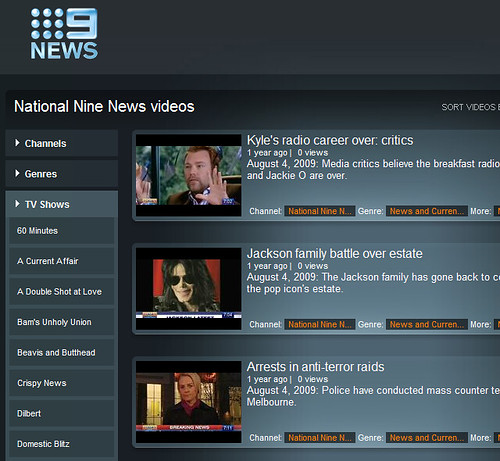Five years ago we looked at dumping the POTS and going VoIP to save big dollars. It cost more to use VoIP.
So, recent events have suggested that moving to ADSL2+ is now a good idea. Now that the local loop is unbundled, true competition has smashed into the marketplace, and VoIP has finally gone mainstream. ADSL2+ prices are cheaper than ADSL. There’s dozens and dozens of VoIP providers, you can even port your existing POTS number to a VoIP number (for certain providers, from certain telecoms companies).
Interestingly, there’s a $10 difference between going with Naked ADSL2+ and ADSL2+ bundled with a home phone; typically you also lose some data allowance, for example going from 20Gig to 15Gig, and that 15Gig will have a further (quite small – I’ve seen an estimate of 30Meg/hr) amount consumed by ‘phone calls. So, you get less, and the question is, can you pull in VoIP functionality for less than the $10 price difference?
Well, maybe. If you insist on porting your existing phone number to the VoIP provider, there are charges (say $3/month), plus an upfront charge ($55). You’ll also need to acquire a convertery-thing to turn your Ethernet cable into a POTS connection for your existing phone handsets, or buy a network-connected VoIP phone, or whatever – some kind of connectivity to your network and thus the ISP and thus through to your VoIP provider is required. If you want a VoIP account with a Direct Inward Dialing (DID) number (you might know that as a phone number) they start at $5/month. So, of your $10 price difference, you’ve just chewed up $8. You get to amortize the connectivity hardware and charges over the $2 savings you’re making; if you’ve got the hardware lying around, the $55 port charge is will be clawed back in just 28 months. Did I mention you’re running with a smaller data allowance? And there’s also the cost of keeping the convertery-thing powered up each month. And the fact that if you lose you broadband connection, you lose your phone (POTS have very high availability rates; broadband not so much).
Now, admittedly, VoIP calls are hella cheap compared to POTS calls. If we made many, that might be a factor. But we don’t, so it’s not. Our phone line’s more for people to call us. If we wanted to place calls cheaply, VoIP accounts without DIDs start at $0; we’re looking at replacing the home phone, and the numbers still don’t stack up, even after all this deregulation and vastly increased competition. Which makes no sense.
Or maybe it does. If the costs are approximately at parity for VoIP and POTS, surely that’s showing that the prices are competitive?
Here’s another scenario. You go with POTS and ADSL2+, plus VoIP with a freshly allocated local number which you use for all outgoing calls. You still need the bridge, and now you need a second phone. You retire your POTS number (advise everyone you know of that you’ve changed numbers – doctor, dentist, home insurer, car insurer, friends, family, work’s HR department, your bank, etc etc – shouldn’t take more than a day or two), but keep it alive for, say, six months (this assumes your ISP loves the idea of you starting out with a POTS line and then dropping it after the six months; I haven’t checked, but I can guess what their reaction will be). You’re paying $15/month over naked prices (ignore bandwidth differences), but your call costs are lower. At the end of the six months you’re saving $5 a month, so another 12 months to break even, and then you can start amortizing the convertery-thingy at $5/month – about two years for every $100 it costs. And once that’s amortized, and you’ve recovered the price of the extra electricity you’ve been using, you’re making pure profit.
I can’t wait.
When the phone line is $5, or $8 for your existing number, rather than $30, that’s when it’ll make sense. But it’s almost at that price now, when you get down to brass tacks, it’s $10 plus they throw in a little extra bandwidth. So we’ve got a competitive situation (at least on the connectivity costs), and VoIP, as a result, sucks balls. Interestingly, bundled plans aren’t sold as “naked plus $10, and we’ll throw in some extra bandwidth!”.
Let’s say you were forced to change phone numbers anyway (perhaps an interstate move), so now it makes sense to go without the POTS number at all. You’ve still got to amortize the convertery-thingy at $5/month, but on the upside you’re saving money on your calls – if you make any.
Final analysis: if you’re forced to change you telephone number anyway, you might as well go Naked ADSL2+ and VoIP. Otherwise, not worth the bother.


